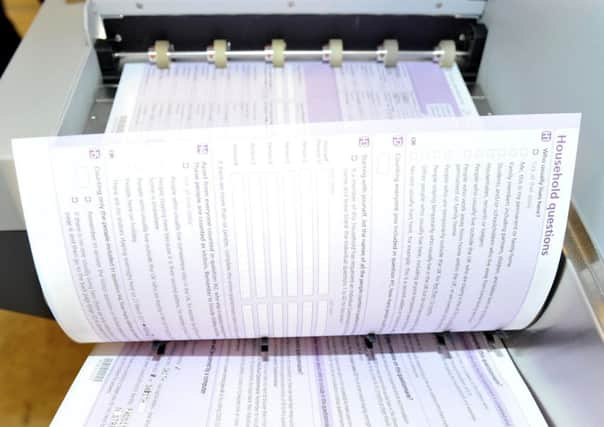Ben Lowry: Stark Catholic-Protestant population change suggests Union is not be as safe as some people say


Adam Kula has presented the data with his usual skill. Even so, you might find the figures hard to follow, and there is a simple reason why.
The census uses two sets of data, which is the statisticians’ best effort to help us all understand complex community identity numbers.
Advertisement
Hide AdAdvertisement
Hide AdThis is no easy matter in an age in which growing numbers of people are irreligious, but for whom Catholic and Protestant labels persist as cultural terms.
But the simplest way to get an understanding of the demographic change in Northern Ireland is to focus in on one statistic.
It relates to children aged under four in the Province at the census in 2011. There were 124,382 of them.
Broken down by the easiest-to-understand category of data, in which everyone is categorised by religion or the religion they were brought up in, the numbers are stark:
• Catholics 61,225 (49.2%)
• Protestant 45,240 (36.4%)
• None 16,692 (13.4%)
• Other religion 1,225 (1.0%)
Advertisement
Hide AdAdvertisement
Hide AdAmong the youngest cohort in Northern Ireland, Catholic children far outnumber Protestants.
More than a decade ago I wrote stories for the Belfast Telegraph which quoted a population expert based in Wales, Jack Parsons, then in his 80s and now deceased.
He said something eerily accurate about international migration. People would be so desperate to reach wealthy Europe, he said, that efforts to repel migration would become increasingly militarised and there would be naval vessels in the Mediterranean.
I often think of that wise man and our phone chats when I see such boats sailing back and forth in the Med, just as he foresaw.
Advertisement
Hide AdAdvertisement
Hide AdMr Parsons also talked about a global factor in population growth, present in divided countries around the world, known as “competitive breeding”. This is driven by the sense of insecurity that some communities have in many nations. They want to drive up their populations and feel safety in numbers.
He thought this had been a factor in the rising Catholic population in Ulster, and he was not persuaded it had entirely ceased to be a factor as late as the early 21st century.
If it is, it is now negligible. The much higher birthrate of Catholics is almost certainly due to a number of factors, including the higher birthrate of previous generations as they then have children.
Another factor presumably is the fact that Northern Ireland has since its inception had segregated schools, including a Catholic sector which helps maintain a strong sense of identity.
Advertisement
Hide AdAdvertisement
Hide AdWhatever discrimination Catholics have suffered in the Province since 1921, the early Stormont government did not impose the secular education that Catholic France did.
This might have had a drastic impact on community identity. I know many people from a Catholic background who attended non Catholic schools and they tend not to be particularly nationalist in outlook. However, this tends to be middle-class grammar school pupils and so they are of course atypical of the most divided communities.
Another factor in the much lower young Protestant population is that it might be more common in the Protestant culture to eschew religion altogether, even nominally.
While church attendance has fallen sharply in the Catholic churches (perhaps more than the Protestant ones), and while atheism rates have risen on both sides of the divide, there is perhaps a higher Catholic attachment to the church.
Advertisement
Hide AdAdvertisement
Hide AdFor decades, a higher percentage of the non-churchgoers were Protestant than Catholic. (If anyone has concrete data on this, we would be happy to run a letter or article on it).
Regardless of the exact reasons for it, the lower Protestant population numbers are dramatic. In 2030, which will be with us soon, the under fours of 2011 will all be in their 20s and well into voting age.
Northern Ireland’s continuing place in the UK will certainly be over within a decade or two of then if it is dependent entirely on Protestant votes.
Irish unity is often dismissed as unlikely because Protestants are 99% in favour of the UK link, and a sizable minority of Catholics are too.
Advertisement
Hide AdAdvertisement
Hide AdBut I have been struck by the hostility that the political centre now feels towards unionism and the lack of hostility to Sinn Fein.
The former is seen as mean and reactionary, and the latter not – despite the horror of the IRA. That centre ground includes scores of thousands of Catholics who are happy with the status quo, but this could change.
Brexit showed that people will not always vote in the way that experts insist is in their financial interest.
Brexit has also made that centre ground, both Catholic and Protestant, angry and less enamoured with the British link.
Advertisement
Hide AdAdvertisement
Hide AdIt is for this reason that unionism must think hard about image, and – without surrendering key principles – align itself closer to the Britishness that so many people in Northern Ireland want to be part of.
The way that Arlene Foster is criticised for her tone and republicans are not, seemingly regardless of their conduct or comments, shows that whether they like it or not, unionists will not be given the benefit of the doubt.
• Ben Lowry (@BenLowry2) is News Letter deputy editor